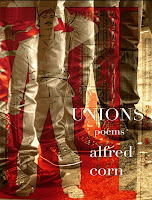I
haven’t previously posted any year-end lists here on my blog. Back in my
younger days, I used to compile them annually, and I took the whole process
quite seriously. I’m not sure exactly why that ritual became less important to
me as time went on. I think it was partly because as I grew a bit older, I
started to realize how much the entire culture is based on the idea of selling
things, and year-end lists are just another aspect of that consumer mentality.
Yet a handful of movies that I saw this year resonated deeply enough that
writing something about them in retrospective summary seemed like a worthwhile
task once again.
My
favorite film of the year was Jonathan Glazer’s distinctive abstraction Under the Skin, one of Scarlett
Johansson’s arthouse projects. It’s not a movie that I initially thought I’d
like, nor even one that I’d been planning to see, but after some trustworthy
recommendations, I was excited to check it out. Its style, themes, and mood
reminded me of Stanley Kubrick, and I think the film is actually as good as
Kubrick, too. The more mysterious elements — who (or what) Johansson’s
character is, where in the cosmos she comes from, where the random men she
picks up in a van disappear to, what her unexplained sidekick on the motorcycle
has to do with it — are the main reasons why the movie has lingered in my mind
many months after watching it. The mysteriousness could be because I’m unfamiliar with the book
on which the film is based, though I’ve read that the book and film are quite
different. I was also staggered by the movie’s daring visual effects, which
left me wondering how they were accomplished.
Under the Skin
would fit perfectly as a double-feature with my second favorite movie of the
year, Alain Guiraudie’s pensive gay French noir thriller Stranger by the Lake. Set entirely at an idyllic lakeside cruising
area for men, with a cast comprised exclusively of men, it’s an explicit (and at
times unabashedly sexual) version of what Under the Skin presents only allegorically. No film I’ve seen captures the rhythms
and rules of a gay cruising area more realistically, immersing its audience in
those codes and expectations. We begin to know who the characters are by which
cars are parked in the lakeside lot, as we observe the daily ebb and flow of the
traffic. It’s not a movie about community, and it’s also not really about
individuals. Relationships, I guess, but a very particular kind. The film’s
been likened to Hitchcock often, and the comparison is apt. Typical plot points
like murder and sex serve as entryways for an exploration of the darker, or at
least less often acknowledged, aspects of desire, loneliness, and human
psychology.
My
favorite documentary of 2014 was Finding
Vivian Maier, an astounding portrait of an eccentric amateur street photographer
whose work was discovered after her death, when a young man named John Maloof (who
also co-directed the film) purchased boxes of her negatives inexpensively at
auction. Little did he know what he’d unearthed. Maier’s voluminous images are
often indelible and stunning, and I was perplexed that some critics and museums
have refused to recognize her artistry. Her choice to work as a live-in nanny,
meaning she didn’t have to pay rent, gave her time to wander around Chicago and
other cities to spontaneously find her candid photographic subjects. The lesson
is one of looking: pay close attention and you will find magic. Maier’s
biography, on the other hand, proves to be enigmatic and sometimes harrowing.
She died in 2009, completely destitute and homeless. While true artists often
fly under the radar, the fact that her art remained unseen in her lifetime is
wrong. Maloof's and Charlie Siskel’s well-crafted documentary humanely corrects that wrong.
The
last two films that I enjoyed most this year, Steven Knight’s Locke and Richard Linklater’s Boyhood, are two very different kinds of
cinematic experiments. Locke is an experiment of scope within extremely close
quarters; the entire film takes place in real time inside the car of the title
character, unforgettably portrayed by Tom Hardy, as he drives to London
overnight, talking to various people on his phone for the duration of the trip.
Although it sounds like a bland exercise, the effect is totally riveting
throughout. My attention never went slack because the movie itself never did
either, gradually escalating the tension from phone call to phone call. Hardy’s
performance is nothing short of miraculous, mostly because everything is
focused non-stop on his facial expressions and his reactions to the voices on
the other end of the line. I’ll keep the details of the storyline a secret here
so that viewers can experience those for themselves. Suffice it to say that Locke is a ride that’s unlike any other
the cinema has offered until now.
The
same could be said of Boyhood. It’s
also an experiment in scope, but one that’s the opposite of Locke since Linklater’s innovative movie
unfolds over twelve full years of its characters’ lives, as well as the actors’
lives, filmed for a few days at a time during each year of that timeframe. We
watch the central character grow up and mature, from age 6 to 18, right before
our eyes. Luckily, Ellar Coltrane has the kind of laidback manner that’s easy
to grow up with. Ethan Hawke and Patricia Arquette, playing his divorced
parents, also age gracefully despite their individual characters’ various
trials and tribulations over time. Arquette’s portrayal is her very best work;
the scenes of domestic violence from her character’s second marriage felt
frighteningly familiar to me, as stark and powerful as the ones that I recall
from my own childhood home. Linklater should win this year’s Oscar for
directing. Boyhood is unprecedented
in cinematic history.


































